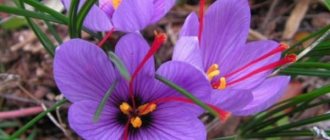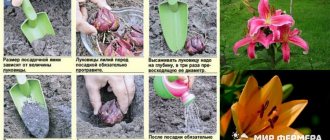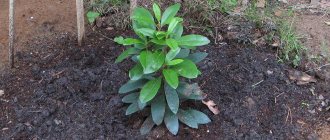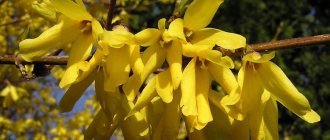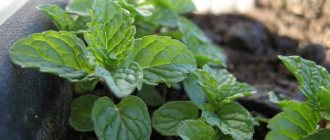Author: Elena N. https://floristics.info/ru/index.php?option=com_contact&view=contact&id=19 Category: Garden plants Published: January 25, 2019Last edits: November 03, 2020
- How to grow eustoma
- Homemade eustoma
- Tall garden eustoma for cutting
Why do gardeners love eustoma so much? For a stunning aroma in the front garden, for beauty comparable to a rose, for long (up to three weeks!) freshness when cut. In the 80s, the Japanese drew attention to a wild flower from the Indian prairies. It was they who gave the world hundreds of varieties and types of eustoma: summer and autumn, potted and garden, terry and bells, tall and dwarf, monochrome and two-color... April 1 - this is the date experienced flower growers call ideal for planting eustoma (seedlings) in the ground in the middle strip, regardless of the weather. And it's not a joke. The thing is that during the first months of life, eustoma develops very slowly, which means that both vigorous weeds and the first heat can easily destroy the baby! Early planting gives the delicate plant a chance to gain strength before the active growth of weeds and the start of intense heat.
- What other tricks might be useful to those who want to grow their own eustoma?
- What determines the flowering period of eustoma?
- What to do if the eustoma has bloomed before the end of “its” season?
Read our article.
Planting and caring for eustoma
- Planting: sowing for seedlings - in late February-early March. Planting seedlings in the garden - three months after germination.
- Flowering: second half of summer.
- Lighting: shade or partial shade.
- Soil: dry, loose, light, well-drained, neutral reaction.
- Watering: scanty, but regular. The best method of watering is drip.
- Fertilizing: with complex mineral fertilizers twice a month.
- Reproduction: seed.
- Pests: thrips, whiteflies, spider mites and slugs.
- Diseases: false gray rot, fusarium, late blight, powdery mildew, root rot, tobacco mosaic virus.
Read more about growing eustoma below.
Eustoma (lat. Eustoma) , also called lisianthus ( lat. Lisianthus - bitter flower), or “Irish rose”, or “Texas bell”, or “Japanese rose”, belongs to the Gentian family. Translated from Latin, “eustoma” literally means “beautiful mouth,” and in a more literary version, “beautifully speaking.” The homeland of eustoma is considered to be the south of North America, Mexico, the north of South America and the Caribbean islands. An American Indian legend says that eustoma first bloomed on the grave of an innocent girl killed by the spirit of war because she refused to become his wife. Irish doctor and botanist Patrick Brown discovered eustoma for Europeans.
The plant is very popular among flower growers as a cut plant, since freshly cut eustoma can stand in a vase with water for up to three weeks. It has been cultivated as a houseplant since the nineties of the last century.
- Mimosa (Mimosa) – care, photos, types
Eustoma: description
Eustoma is also called Irish rose or lisianthus, which means bitter flower in Latin. The plant belongs to the Gentian family. The flower is also called:
- texas bluebell (Texas bell);
- prairie gentian (prairie gentian);
- tulip gentian (tulip gentian)
- sometimes gentian (gentian).
Eustoma is common in the southern United States, often found in Mexico, and grows in the area of the Isthmus of Panama, in the northern part of South America and on some islands of the Caribbean Sea.
The eustoma rose grows up to 60 cm in height. Under natural conditions, the flowers of the plant are blue, and the bred varieties come in red, white and yellow shades.
The most common varieties are Eustoma grandiflora and Eustoma Russell. There is a type where these varieties are combined. Irish roses can be double or funnel-shaped. The leaves are glaucous and waxy. When the flower is partially half-open, it resembles a rose, and when it is fully open, it most closely resembles a poppy. The stems are strong, the stem begins to bush from the middle. Each plant resembles a bouquet and can produce up to 35 buds. Peduncles are long, suitable for cutting.
This flower is very popular in Europe and is characterized by high decorative properties. In Holland it is actively used in bouquets; in Poland it is one of the most expensive flowers. In the Netherlands it is among the 10 most popular. But eustoma is supplied for sale by African countries such as Tanzania and Kenya.
The flower is very popular when making bouquets, as it is highly resistant to wilting. Every year, breeders develop new varieties of eustoma, which not only have more advanced decorative properties, but also have a shorter growing season and bloom faster.
Eustoma alba is the most popular wedding flower. She was able to replace large varieties of cloves. Dwarf varieties are especially in demand.
Botanical description
The stems of eustoma are strong, almost a meter high, but graceful, like a carnation. From the middle, the stems begin to branch, so the branch is a whole bouquet, which can contain up to 35 buds, blooming one by one. The leaves of eustoma have a grayish or bluish tint, they are lanceolate-oval, matte, as if made of wax. The calyx of the flower is funnel-shaped, large and deep. Eustoma flowers, double and non-double, 5-8 cm in diameter, in different shades - pink, lilac, white, purple, plain or with a contrasting border. When the eustoma bud is half-opened, it looks like a rose, but when the flower opens, it resembles a double poppy.
Eustoma is a biennial plant in nature; in the garden it is usually grown as an annual plant. Perennial eustoma is possible only in a potted version. In the ground, eustoma can be grown as an annual and biennial plant.
What does eustoma mean in the language of flowers?
Lisianthus has many meanings
, but they are all associated with happiness and joy:
- Devotion and fidelity.
- Warm, friendly attitude and sympathy towards the recipient.
- Admiration and respect.
- The charisma and charm of the giver.
- Calmness and tranquility, harmony.
Lisianthus is a prairie flower. Abroad, it means traditionalism and conservatism, the desire to follow the accepted order.
Features of cultivation
- eustoma prefers bright, diffused light;
- the best soil for eustoma is bark humus and peat in equal parts;
- propagated only by seeds, since cuttings do not germinate, and the too fragile root system does not tolerate division;
- It is necessary to water only after the substrate has dried 2 cm deep;
- try not to replant the plant: it is only conditionally perennial, and the roots will not tolerate replanting;
- home eustoma blooms best in a cool, ventilated room.
In the photo: Blooming purple eustomas in the garden
Growing eustoma from seeds
Growing eustoma at home is a painstaking and time-consuming task. However, for those who master this process, it can become a very profitable business, since eustoma is becoming increasingly popular both as a garden flower and as a potted crop. In this section we will talk about how to grow eustoma from seeds, and the main difficulty of this process is that eustoma seeds are too small: there are 23,000 of them in one gram! Purchased seeds undergo special treatment to increase germination, so out of a hundred such seeds, about sixty germinate.
If eustoma is grown from seeds for planting in the garden, then it should be sown in February or March, then it will bloom in July-August. The substrate is needed as for flower plants: sterilized, low nitrogen content, pH 6-7. After scattering the seeds, do not cover them with soil, just press lightly and cover the container with film or glass, leaving gaps for air circulation and providing additional illumination with fluorescent lamps for 10-12 hours a day.
The temperature for seed germination should be at least +20 ºC during the day and at least +14 ºC at night. Instead of watering, spray the seeds from time to time, although you are unlikely to have to do this for the first two months: there will be an excess of evaporated moisture.
If all conditions are met, seedlings should appear no later than two weeks, and as soon as this happens, you need to remove the coating and periodically spray the seedlings with Fitosporin solution. As soon as the seedlings have several pairs of leaves (this will happen in about a month and a half), plant them in pots with a diameter of 4-5 cm. After three months, the plant, along with a lump of earth, is planted in the ground.
- Sweet clover: properties and contraindications, planting and care
In the photo: White eustoma blooming
How to sow seeds for seedlings
Seeds for seedlings are sown during the winter, from November to March (if planted in November, the plant will produce flower arrows later, but there will be more leaves, and in general the plants will be more luxuriant, and vice versa). It has been noticed that with later planting, in March-April, the plants produce flower shoots earlier, but the rosette of leaves is less well formed, and the bushes are less lush.
OshalaForumHouse Member
Last year I sowed on 02/07 and bloomed at the end of August. Now I would sow in January, with additional light.
Soil requirements: it must be light in order to allow air and water to pass through well. You can use ready-made soil or stock up on garden soil from the fall (it’s best to take soil from the place where nettles grew) and mix it with vermiculite or peat in a 50:50 ratio.
You can also buy commercial soil.
SkyForumHouse Member
Eustoma loves acidity from 6.5 to 7.2, based on this, select the soil.
Water the soil well, distribute the seeds on its surface, press down and spray with a spray bottle. There is no need to embed the eustoma seeds, just cover them with a bag and place them in a bright, warm place where the temperature stays up to +25 degrees.
Experts advise taking the container with the sown eustoma seeds to a cooler place at night (it is recommended to lower the temperature to +17 degrees), and since daylight hours are short in winter, it is recommended to light the seeds so that they receive light 14 hours a day. In practice, not all FORUMHOUSE gardeners followed these tips; as a rule, few people have the opportunity to lower the temperature, but the seedlings grew successfully.
It will take a long time to wait for germination (especially from pelleted seeds), ten days at best, but the seeds can “sit” for a month, and the soil will have to be constantly sprayed to keep it moist, and once a day you must open the bag for a few minutes to ventilate . To avoid forgetting, many people set an alarm or send themselves a reminder on their phone.
If you are new to growing eustoma, then it is better to do this:
- Sow seeds in January-early February, with additional light. The timing of sowing depends on the location of the window - if you grow on a southern windowsill, sow in February, if not, then in mid-January.
- Sow the seeds in peat tablets and water by heating.
- Sowing must be done superficially; the seeds are not covered with soil.
If these conditions are met, the eustoma should already bloom in June.
Eustoma at home
Planting eustoma
If you want to decorate your apartment with blooming eustoma in winter, sow from July to September. Fill a small container with a moist substrate consisting of sand and peat (1:1) and scatter the seeds over it. Place the container covered with film or glass in a warm (19-22 ºC) and bright place, spray the seeds if necessary, and in two to three weeks you will see shoots.
In the photo: Growing eustoma seedlings in tablets
Growing seedlings
As soon as the seedlings have the first pair of leaves, reduce the amount of moisture, allowing the top layer of soil to dry out between waterings. In the future, moisten only in the morning, so that, in order to avoid blackleg disease, the leaves are already dry in the evening and at night. When the sprouts have two pairs of leaves, you can plant them in separate pots and wait for flowering, which should occur in January-February.
In the photo: Eustoma seedlings in pots
Eustoma care
Growing eustoma in pots is not an easy task, since it urgently needs fresh air and bright, diffused light. The best way out is a western or eastern window in the room with the ability to maintain an optimal temperature for the plant of 19-22 ºC with regular ventilation. In addition, caring for eustoma involves moderate watering with settled soft water as the top layer of soil dries.
Try to avoid both waterlogging and drying out of the soil. There is no need to spray the plant, as this can lead to leaf diseases.
During the period of intensive growth and during the formation of buds, the eustoma needs to be fed with liquid complex fertilizers in a consistency of 10-15 ml per 10 liters of water. And, of course, it is necessary to remove faded flowers in a timely manner. Try to comply with these conditions, and your eustoma will delight you with its flowering again in 90-100 days.
In the photo: Growing eustoma on a windowsill
Selection of soil and container
The most suitable substrate for growing eustoma will be a ready-made mixture for violets. You can buy it at any flower shop. If you want to tinker, you can make your own soil mixture from humus, garden soil and coarse sand. A little lime is also added. Eustoma is also grown in a substrate consisting of fine peat and tree bark (in equal proportions).
Soil acidity is a very important point. The optimal pH is from 6.7 to 7.0.
In an acidic environment, the plant slows down in growth, and chlorosis develops on the leaves. This is a result of what is called zinc toxicity.
How to plant and care in the garden
How to grow eustoma
Eustoma garden can be grown from seeds, sown in December or January for flowering in June or July. Fifty-milliliter cups are filled with soil mixture for violets and 3-5 seeds are laid out on top, lightly pressing them into the ground, and covered with film so that the eustoma grows as in a greenhouse. The film will have to be lifted every 10 days to remove condensation from it and allow the seedlings to breathe a little. The optimal temperature for emergence after two weeks is 20-25 ºC. For the first couple of months, seedlings also need additional lighting, but even with all these necessary conditions, the seedlings will grow very slowly. At the end of February, the seedlings are placed on a sunny windowsill.
In the photo: Growing eustoma in the ground
Planting seedlings
As a disease prevention, spray the seedlings with a solution of Fundazol at the rate of 1 teaspoon per 1 liter of water, and for faster growth - with Zircon or Epin. A month and a half after the emergence of seedlings, when they already have a couple of leaves, plant the seedlings in pots of 3-5 pieces, immersing the lower leaves in the soil. Don't forget to water and cover each pot with a plastic bag for a greenhouse effect.
- How to grow cacti in a garden where winter temperatures drop below -20°C
How to grow freesia - at home and in the garden
In a week, the seedlings will double in size. At the end of February or beginning of March, transplant the seedlings into larger pots (diameter 8 cm) together with an earthen ball using the transfer method, having first placed a drainage layer in the pots. Now they will grow up, waiting to be planted in the ground.
In the photo: Eustoma seedlings at home
Growing eustoma in the garden
In mid-May, when the risk of frost is behind us, the seedlings are planted in open ground. Choose a place for eustoma that is protected from drafts, with good drainage, and light, but the light should be diffused. Planting is carried out in the evening or in cloudy weather. The seedling is immersed in a well-moistened hole along with a lump of earth in which it grew in a pot.
Eustoma grows as a bush, so it should be planted at a distance of 10-15 cm from each other. After planting, cover the seedlings for the first 2-3 weeks with glass jars or cut-off plastic bottles, and during this time you may not water them. We have already written about watering, but let us clarify once again: eustoma is harmed by both increased soil moisture and lack of moisture.
In the photo: Eustoma blooming in a flowerbed
When 6-8 leaves form on the stem, pinch the top to help the plant branch better. About a month after planting, when the seedlings are already well rooted, they need to be fed with soluble mineral fertilizers. Plantafol is suitable for this purpose. In June, spray the eustoma with Plantafol growth with a high nitrogen content, and in July and August - with Plantafol budding solution. You can use the drug Kemira, it is dissolved in water and watered at the roots of the plants. Just try to use the drugs in slightly lower concentrations than the manufacturers suggest.
Conditions for growing alstroemeria in the garden
The beginning of eustoma flowering depends on when you sowed the seeds. If sowing took place at the end of November or beginning of December, then the eustoma will begin to bloom in early or mid-July - it also depends on what kind of spring it will be. If you sow the seeds in mid-January, flowering will most likely begin in August. After flowering begins, this process does not stop until the end of October: some buds fade, others bloom, and so on.
Blooming eustoma is not afraid of early frosts, and only with frost of -10 ºС and snowfall can the flowering of eustoma stop. If your eustoma has bloomed early, cut off the faded flowers, and, quite possibly, the eustoma will bloom again in six weeks.
In the photo: Eustoma blooming in a pot on the windowsill
Among the pests of eustoma, aphids, slugs, whiteflies and spider mites are dangerous. To protect against insects, you should use Aktara, Fitoverm, Actellik or Confidor. Eustoma is affected by powdery mildew, fusarium or gray mold, from which it can be protected by preventive spraying with Fundazol or the use of the drug Ridomir Gold.
Eustoma grandiflora
Eustoma grandiflorum. Another name for eustoma is lisianthus.
This close relative of gentians (family Gentianaceae) comes from the arid regions of the Americas and northern Mexico. The botanist Salisbury registered the genus Eustoma in 1806, but scientists Patrick Brown, Linnaeus and Hooker were able to provide more accurate information about the plant. Introduced into culture in the late 1880s.
Presumably, the first seeds were brought to Europe from Japan in 1931. Serious supplies of seeds began in 1977. Since then, the assortment has changed a lot - double, bicolor, cut and even indoor plants have appeared.
Eustoma description
Eustoma is a biennial plant. In the middle zone it is grown as an annual crop; it does not overwinter in open ground.
The stems are about 50-70 cm high, up to a meter in cut varieties. The shoots branch starting from the middle of the trunk. Eustoma blooms in a bouquet type - one plant can have about 15-20 flowers and buds. The flowers are large bell-shaped, about 5 cm in diameter. Color: white, yellowish, apricot, pink and reddish, blue, lilac, purple. There are two-color options. The leaves are 5-8 cm long, elliptical, bluish-green, with noticeable veins and a waxy protective layer.
Excellent plants for the foreground of flower beds and container culture. At home, low-growing forms of eustoma are grown as indoor plants.
Conditions for growing eustoma
Lighting : Bright diffused light, protection from direct sunlight. Shading is necessary on southern windows; it is advisable to choose western or eastern ones.
Planting location : Raised flower beds with well-drained soil and low groundwater levels, away from buildings that might run off rainwater. In open ground, try to avoid proximity to objects that reflect the sun's rays. Because of this proximity, eustoma leaves can burn.
Soil : When growing eustoma in the garden, sandy loam, light or medium loamy, well-drained soil with a neutral reaction (pH 6.5-7.0) is preferred. When grown at home, the composition of the soil mixture is high peat and humus in equal parts, it is possible to add fine pine bark.
Temperature : It blooms better and sets buds in a cool, ventilated room at +16...+20°C. When growing in container culture, pots should be light in color to prevent the plants from overheating. Sensitive to fresh air.
Types and varieties of eustoma
The original view is e. Russell (E. russellinum), or grandiflora eustoma (E. grandiflorum). Height 60-90 cm, blooms with blue or purple flowers with a diameter of 5 cm in July-September.
Mainly a series of F1 hybrids are grown: 'Yodel', 'Echo' (usually tall or cut), 'Marmaid Blue' (dwarf), 'Matador' (short).
When purchasing, choose hybrids with early flowering. In the middle zone, plants with late flowering will not bloom.
Eustoma: reproduction
Eustoma propagates by seeds. In warm climates - self-sowing. In the first year it forms a rosette of leaves, and if wintering is favorable, it blooms the following summer. In the middle zone it is grown by seedlings. Seedlings are sown indoors at the end of January-February, the seedlings are ready for planting in open ground at the end of May.
Propagation of eustoma by cuttings is impossible - eustoma cuttings do not root.
Eustoma: propagation by root and planting of bulbs. Beware of unscrupulous sellers. Eustoma cannot be sold in the form of bulbs - it does not form bulbs. Sometimes the roots of perennial plants are sold by type of eustoma. Lisianthus does not reproduce by dividing the bush. If you're lucky, you'll get an unpretentious perennial, such as phlox or hosta. Eustoma sections die after transplantation. Eustoma is not a perennial plant; its root system is very poorly restored and does not take root. The only reliable way to get lisianthus is to sow seeds.
Growing eustoma for cutting
Spectacular single or double flowers last a long time when cut. They are often used by florists for wedding bouquets and celebration decorations.
Every year, Japanese breeders present more and more exotic cut varieties of eustomes at flower exhibitions. Eustomas are grown for cutting in greenhouses. There artificially create favorable conditions that allow the plant to be cultivated throughout the year. First, seedlings of mother plants of tall varieties are grown using the seedling method. After cutting the first flower stalks, the mother plants are cut off and kept for some time in a dormant state at a temperature not exceeding +10°C. Then watering and fertilizing are resumed, and after 3-4 months re-blooming occurs.
Eustoma at home
Potted, or indoor, home eustomas appeared in the 90s. Pots go on sale during the flowering period. Indoor specimens have single-double flowers of blue, purple, mauve or white color. It does not tolerate winter in an apartment well, requires maintenance at low temperatures and has special requirements for watering. It is part of the group of so-called “bouquet” plants, which are usually replaced with new specimens after flowering. When purchasing, try to choose specimens with colored but not open buds.
Diseases and pests
Little damage is caused by pests. When signs of diseases and pests appear, the eustoma is treated with appropriate medications.
Pests: aphids, whiteflies, miners, fungus gnats, slugs.
Common diseases: gray rot, fusarium, downy mildew, root rot, late blight, tobacco mosaic virus. It is necessary to thoroughly disinfect the soil and protect the seedlings from dripping moisture. Seedlings are very sensitive to blackleg.
Growing eustoma from seeds
The development process from sowing to the onset of the flowering phase lasts about three months. For seedlings in February, seeds are sown superficially under film or glass. Typically, eustoma seeds are sold in granules. They are offered by “Kitano”, Gavrish. The best results are obtained by growing seedlings from pelleted seeds in Jiffy-type peat tablets. This facilitates subsequent eustoma transplantation.
For sowing, use light sandy soil with a neutral reaction (pH 6.5-7.0). The seeds are lightly pressed into the soil with a damp toothpick and sprayed with a spray bottle. The technology for germinating eustoma seeds is similar to growing petunia and lobelia from seeds.
Seeds germinate for 10-14 days in a bright place at a temperature of +21...+24°C, then it is advisable to lower the temperature to +15°C.
The crops are periodically sprayed, ventilated once a day, and drops of condensation are removed from the film (glass, lid). If the seed shell is difficult to separate, you can drop a little warm water from a pipette onto the seedling cap. After the first cotyledon leaves appear, usually after two weeks, the film is removed.
Eustoma seedlings are very sensitive to light. Eustoma is kept until March with additional artificial lighting with fluorescent lamps, providing additional illumination for about 16 hours during the day, turning off the lamp at night. The distance from plants to lamps is 34 - 36 cm.
Before two pairs of true leaves have formed, the shoots are sensitive to rosette. Rosettes, similar to cabbage heads, retard and suppress the growth of stems. Such specimens die in open ground. To avoid the appearance of sockets, the temperature during the day should not exceed +24ºC, and at night should not fall below +16ºC. At the sprout stage, seedlings develop very slowly, building up a powerful root system. Avoid overwatering to prevent rot and blackleg.
After 3 true leaves appear (usually after 10 weeks of cultivation), the eustoma is planted in separate deep containers. A 200ml tray is best for maintaining a balance between small sprouts and deep root systems. When transplanting, try not to disturb the roots; take seedlings with a clod of earth. After transplantation, the temperature is temporarily reduced to +16 °C. High temperatures stimulate the formation of rosettes and lead to growth arrest.
The seedlings are watered as the top layer of soil dries, excess water is drained from the trays, preventing the soil from becoming waterlogged. At the first signs of lodging of seedlings and to prevent the disease “black leg”, the seedlings must be treated with “Fitosporin”, and the interval between waterings must be shortened.
After picking, fertilize with a solution of calcium nitrate (20 g per 10 l) or fertilizer for seedlings, for example, Plantafol (NPK 30:10:10) according to the instructions. If you do not start feeding the seedlings, rosette development of plants is also possible. Then the seedlings are fed weekly with complex fertilizer for flower seedlings according to the manufacturer’s instructions. For better branching, pinch the ends of the shoots.
In April, when the temperature approaches +15°C, the seedlings begin to gradually harden, taking them out onto the balcony for a while. Planted in open ground after the threat of frost has passed.
How to grow eustoma seedlings, read a detailed master class with photos here >>>
How to grow eustoma seedlings in peat tablets, see the master class and photos >>>
Caring for eustoma in open ground
Plants are planted in pre-prepared and fertilized holes at a distance of 15-30 cm from each other. When plantings are dense, fungal diseases can quickly spread. It is important to ensure good drainage since eustoma comes from dry areas. Keep the soil loose and weed-free throughout the year. Mulching makes it much easier to grow eustoma.
In the garden, eustoma blooms from July to September. A tall and thin peduncle cannot support multiple large flowers, so it is better to immediately install a support. In rainy weather, the buds get wet and may rot. It is advisable to immediately tear off soured and unopened flowers and faded buds to prolong flowering.
In rainy summers, to prevent fungal diseases in dry weather, treat the plantings with Fitosporin according to the instructions or with foundationazole (1 g per 1 liter of water).
Plants prefer drip watering as the soil dries out. Twice a month, watering is combined with fertilizing with a complex of fertilizers. During flowering, watering increases, reduces the amount of nitrogen and increases the content of potassium and phosphorus.
In dry and long hot summers, it is possible to ripen and collect its seeds. They are dried and used for sowing next year. The exception is F1 hybrids. Their seeds do not transmit parental properties, so there is no need to collect your seeds from hybrid plants.
In warm areas, when growing eustomas in container culture, you can save the rhizome and replant it the following spring. When there is a threat of autumn frosts, container eustomas are brought into the house, where their modest, but still flowering continues. For winter, the stems of eustoma are cut off, leaving 2-3 internodes. In winter, store in a pot at a temperature of +10°C in a cool, dry room, water rarely to slightly wet the soil, and do not feed. Watering is resumed as new shoots grow with the onset of bright days - at the end of February. In the second half of June, when the threat of frost has passed, the plant is planted in open ground. Flowering next year will be very weak.
CARE RECOMMENDATIONS
The plant is grown by seedlings.
It is important to ensure good drainage since eustoma comes from dry areas. Watering - as the top layer of soil dries.
Eustoma after flowering
Homemade eustoma
The stems of faded potted eustoma are cut so that 2-3 internodes remain on them, and they are transferred for storage to a room with a temperature of +10-15 ºC. Watering during the dormant period is rare; there is no need to feed the plant. In the spring, when you see new shoots, carefully replant it along with the earthen ball into new soil and resume watering and normal care.
Garden eustoma
You can extend the flowering period of your garden eustoma by replanting it together with garden soil in a pot and moving it to a balcony or windowsill. In the house, with normal care, it will delight you with flowering for some time. But a period of rest occurs in all plants. After the flowers have withered and the leaves have yellowed, the garden eustoma is treated in the same way as the indoor one: the stem is cut at a height of 2-3 internodes and transferred to a cool, well-ventilated room, almost stopping watering. There she will wait for spring.
Types and varieties
of eustoma Russell (Eustoma Russelianus) are grown as a potted crop of eustoma grandiflorum (Eustoma Grandiflorum) are grown as a garden crop . Some flower growers even believe that these are the same species, and while flower scientists find out who is right, we will divide the types and varieties of eustoma according to their intended purpose. Eustoma can be short (no higher than 45 cm) or tall. Tall varieties are grown in the garden for cutting, and low-growing varieties are grown mainly as indoor or balcony varieties.
Tall garden eustoma for cutting
- variety : double eustoma, height 90-120 cm, flowers of blue, white, light blue and pink. Flowering is early, 2-3 weeks earlier than other varieties;
- variety Echo: height 70cm, spreading stems, large flowers, early flowering, 11 color variations, both single-color and two-color;
- variety : plant height 90 cm, simple flowers, abundant flowering, 15 color variations in the culture;
- Flamenco variety height 90-120 cm, strong stems, simple flowers, but very large (up to 8 cm), the main advantage is that it is not capricious. Many shade variations.
In the photo: Growing eustoma in open ground
Low-growing varieties of eustoma for growing in an apartment
- Mermaid: height only 12-15 cm, flowers are simple, up to 6 cm in diameter, shades of white, blue, pink and purple. Does not require pinching to enhance branching;
- LittleBell: does not exceed 15 cm in height, flowers are simple, medium-sized, funnel-shaped, of different shades, does not need pinching;
- Fidelity: white eustoma with multiple simple flowers located on the peduncle in a spiral, height up to 20 cm;
- FloridaPink: Pink eustoma with simple flowers that form a lined bouquet.
In the photo: How uzstoma blooms in the garden
Bloom
As we have already said, eustoma of the first and second flowering groups blooms in our conditions on average 6-7 months after germination or 22-26 weeks, as seed producers indicate.
In our climate, after transplanting into open ground and before flowering, it usually takes 8-10 weeks. These timings mainly depend on the variety, the size of the seedlings being planted and the amount of sunlight at the planting site.
But in general, depending on the time of sowing seeds and planting in open ground, eustoma blooms starting from the end of June in the south, and in the worst case does not have time to bloom at all in the Moscow region, North-West, Urals and Siberia.
For example: it happens that seedlings are planted with buds already 50-70 cm high and they bloom even in Siberia in a few weeks, and sometimes they are 20-25 cm high and they bloom at the end of August in the Moscow region.
Should I cut the flowers or leave them?
Many gardeners cut flowers and place them in a vase at home rather than leaving them in a flower bed. This is due to the fact that flowers stand in water for a very long time, and, according to many gardeners, they look much more impressive in a home interior than in a garden bed.
Those flower growers who decide to leave flowers in their dacha will be pleasantly surprised by the duration of flowering. After all, lisianthus blooms for a long time: from the moment the first flower blooms to the very last, up to 6-8 weeks can pass, and in very favorable conditions even more.
If you did not cut the flowers, then after they fade they need to be trimmed so as not to reduce the decorativeness of the bush. Also, the plant will not waste energy on producing seeds, and the next flowers will be larger.
It is important to know! The more ultraviolet light, the more saturated the color of the inflorescence. And an excess of nitrogen, high air humidity and night temperatures above 23 °C, on the contrary, lead to a paler color of the petals.
